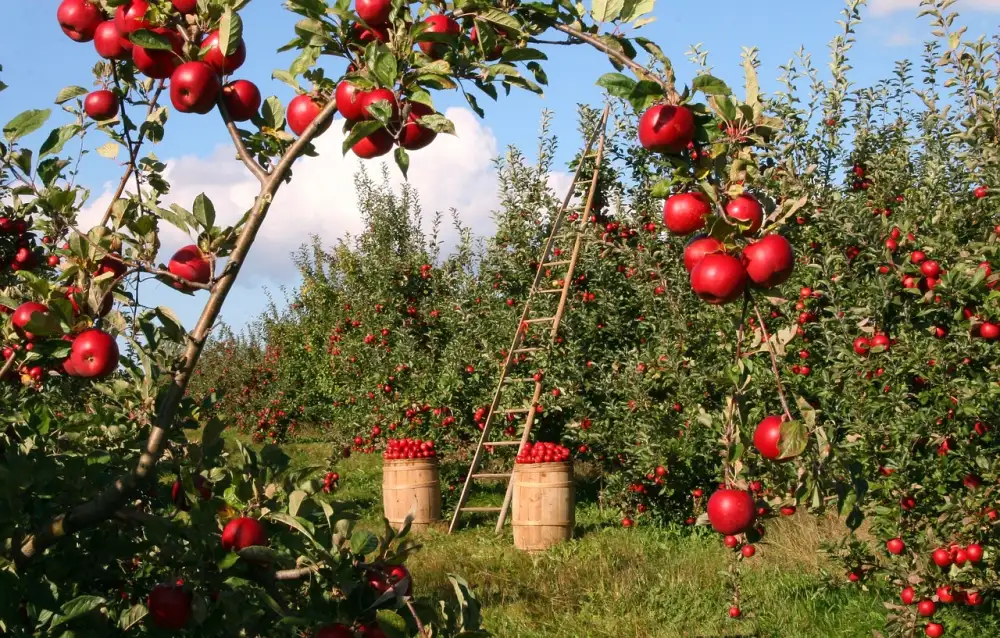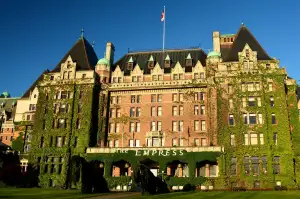Mastering the Art of Harvesting Rhubarb: When and How to Pick the Perfect Stalks for Your Home Garden

Rhubarb, with its vibrant red stalks and tart flavor, is a beloved ingredient in many culinary creations. But before you can enjoy this versatile vegetable, you need to master the art of harvesting it. Whether you're a seasoned gardener or just starting out, understanding the basics of rhubarb harvesting is essential. In this article, we will guide you through the process of picking the perfect stalks for your home garden. So grab your gardening gloves and let's dive into the world of rhubarb harvesting!
Understanding Rhubarb Growth Cycle
To master the art of harvesting rhubarb, it is essential to understand its growth cycle. Rhubarb is a perennial plant that goes through distinct stages throughout the year. In early spring, rhubarb emerges from its dormant state and starts to grow rapidly. During this time, the plant focuses on establishing strong roots and developing healthy leaves.
As the weather warms up, rhubarb enters its growth phase. The plant's leaves continue to expand, and the stalks become thicker and more vibrant in color. This stage is crucial for rhubarb as it accumulates energy and nutrients for future growth.
After several weeks of vigorous growth, rhubarb begins to flower. However, it is important to note that flowering can weaken the plant and affect the quality of the stalks. To ensure optimal harvest, it is recommended to remove any flower stalks as soon as they appear.
Once summer arrives, rhubarb transitions into a period of slower growth. The stalks may become thinner and less tender during this time. It is advisable to refrain from harvesting rhubarb during this stage to allow the plant to replenish its energy reserves.
In late summer or early fall, rhubarb enters its dormant phase. The leaves start to wither, indicating that the plant has completed its growth cycle for the year. At this point, harvesting should cease entirely to allow the plant to rest and prepare for winter.
By understanding the different stages of rhubarb's growth cycle, you can effectively plan your harvests and ensure a bountiful yield year after year.
Signs of Rhubarb Readiness for Harvest
Before you start harvesting your rhubarb, it's important to know when the stalks are ready to be picked. There are a few key signs that indicate rhubarb readiness.
Firstly, look for stalks that are thick and firm. These are usually a good indication that the rhubarb is mature and ready to be harvested. Avoid picking stalks that are thin or floppy as they may not have reached their full potential.
Secondly, check the color of the stalks. The ideal color for harvesting is a vibrant red or pink hue. This indicates that the rhubarb has developed its characteristic tart flavor. Green stalks can still be harvested but may have a milder taste.
Lastly, examine the size of the leaves. If the leaves are large and fully open, it's a sign that the plant is well-established and can handle some harvesting without being weakened. However, if the leaves are small and tightly closed, it's best to wait a little longer before picking any stalks.
By paying attention to these signs, you can ensure that you harvest your rhubarb at its peak flavor and texture. Remember, patience is key in achieving the best results from your homegrown rhubarb!
Best Time to Harvest Rhubarb
The best time to harvest rhubarb is in the spring, typically from April to June. This is when the stalks are at their peak flavor and tenderness. It's important to wait until the plant has matured for at least two years before harvesting, as this allows it to establish a strong root system. Harvesting too early can weaken the plant and reduce future yields. Remember, patience is key when it comes to rhubarb!
Harvesting Techniques for Rhubarb
Harvesting rhubarb requires a delicate touch to ensure the best flavor and texture. Start by selecting mature stalks that are at least 10-15 inches long and have a deep red color. To harvest, firmly grasp the stalk near the base and gently twist while pulling upwards. Avoid cutting the stalks as this can introduce bacteria and reduce shelf life. Be careful not to damage the crown or surrounding plants during the process. Remember, regular harvesting promotes continuous growth throughout the season. So, enjoy your freshly picked rhubarb in pies, jams, or even savory dishes!
Storing and Preserving Rhubarb
Once you have harvested your rhubarb, it's important to store it properly to maintain its freshness and flavor. Start by removing any leaves attached to the stalks, as they can drain moisture from the plant. Rinse the stalks gently under cold water to remove any dirt or debris.
To store rhubarb in the refrigerator, wrap the stalks loosely in a damp paper towel and place them in a plastic bag. This will help retain moisture and prevent wilting. Rhubarb can be stored in the refrigerator for up to two weeks.
If you want to preserve rhubarb for longer periods, consider freezing it. To freeze rhubarb, first wash and cut the stalks into small pieces. Blanch them in boiling water for 1-2 minutes, then transfer them into an ice bath to cool quickly. Drain well and pack into freezer-safe bags or containers. Frozen rhubarb can be stored for up to a year.
Another popular method of preserving rhubarb is by making jams, compotes, or sauces. These can be canned using traditional canning methods or stored in sterilized jars in the refrigerator for several weeks.
Remember that rhubarb is highly acidic, so avoid using aluminum cookware when preparing or storing it as it can react with the metal.
By following these storing and preserving techniques, you can enjoy the delicious taste of rhubarb long after harvest season has ended.
Harvesting rhubarb can be a rewarding experience, providing you with delicious stalks to enjoy in various culinary creations. Remember these final tips to ensure a successful harvest:
1. Be patient: Allow your rhubarb plants to establish themselves for at least two years before harvesting. This will ensure a stronger plant and better yields in the long run.
2. Cut, don't pull: Always use a sharp knife or garden shears to cut the stalks at the base. Pulling can damage the plant and lead to decreased productivity.
3. Harvest selectively: Only pick stalks that are thick and firm, with vibrant colors. Leave smaller or thinner stalks on the plant to continue growing.
4. Avoid over-harvesting: Never remove more than one-third of the total stalks from a single plant at once. This will allow the plant to recover and continue producing throughout the season.
5. Remove leaves immediately: Once you've harvested the stalks, trim off any leaves as they are toxic and should not be consumed.
6. Store properly: If you're not using your rhubarb right away, store it in a plastic bag in the refrigerator for up to one week. For longer-term storage, consider freezing or preserving methods such as canning or making jams.
By following these tips, you'll become an expert in harvesting rhubarb and enjoy its tangy goodness all season long!
Published: 11. 01. 2024
Category: Home



